CLEFT SENTENCES IN ENGLISH We use cleft

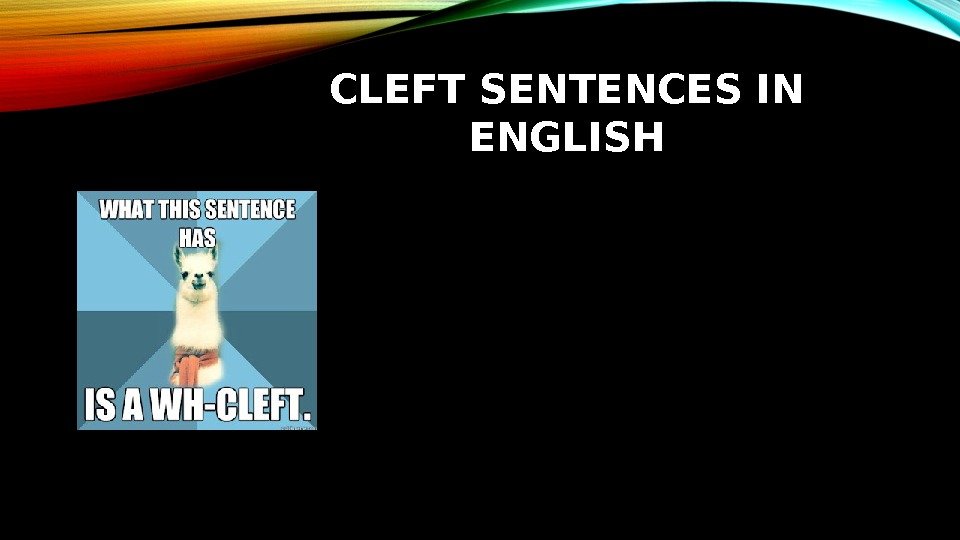

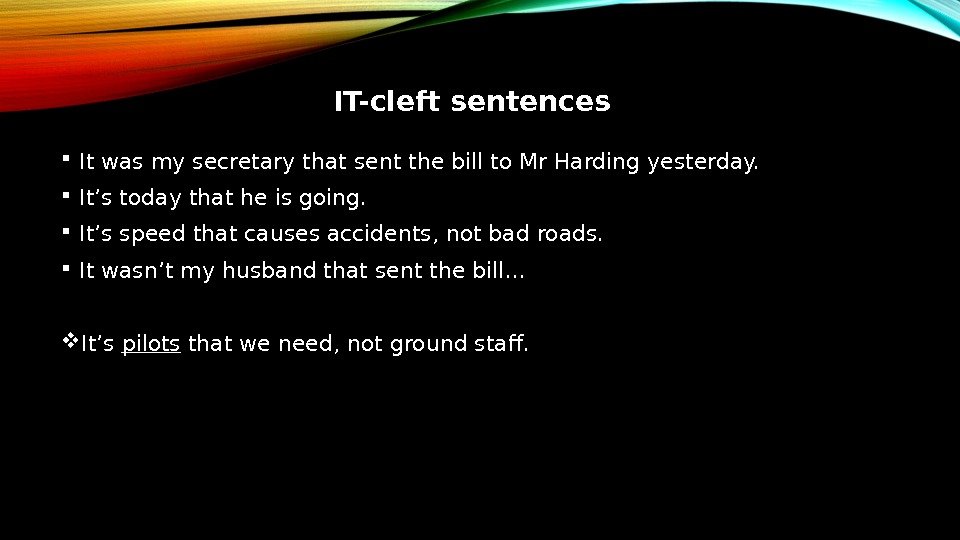

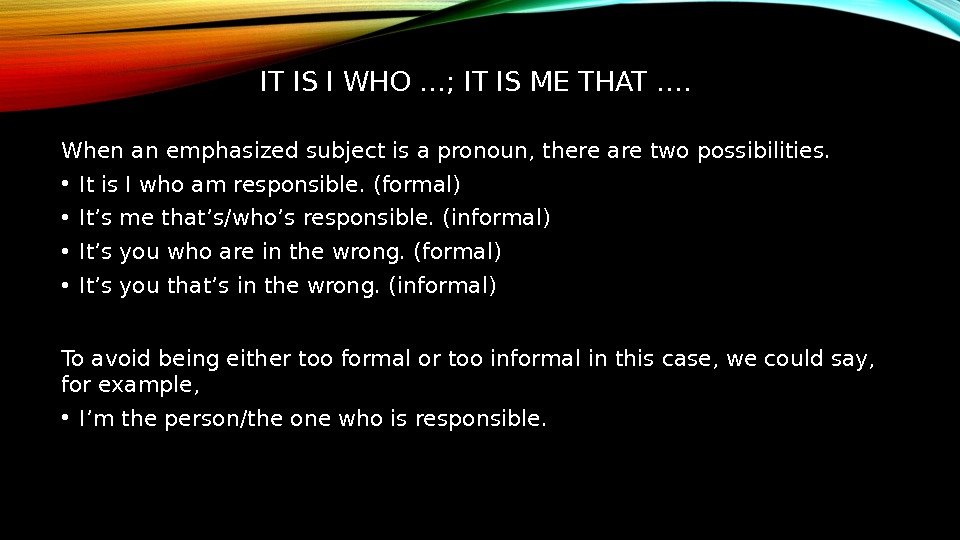
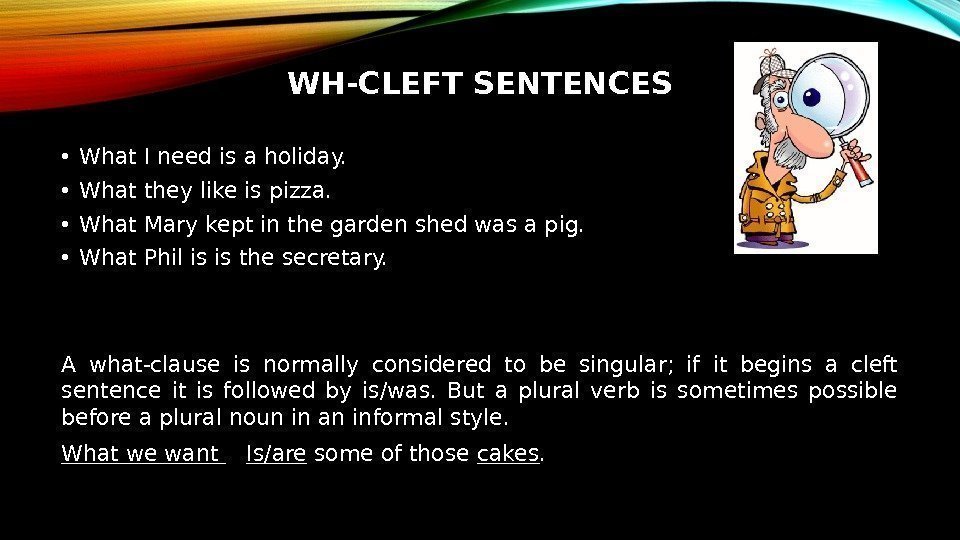


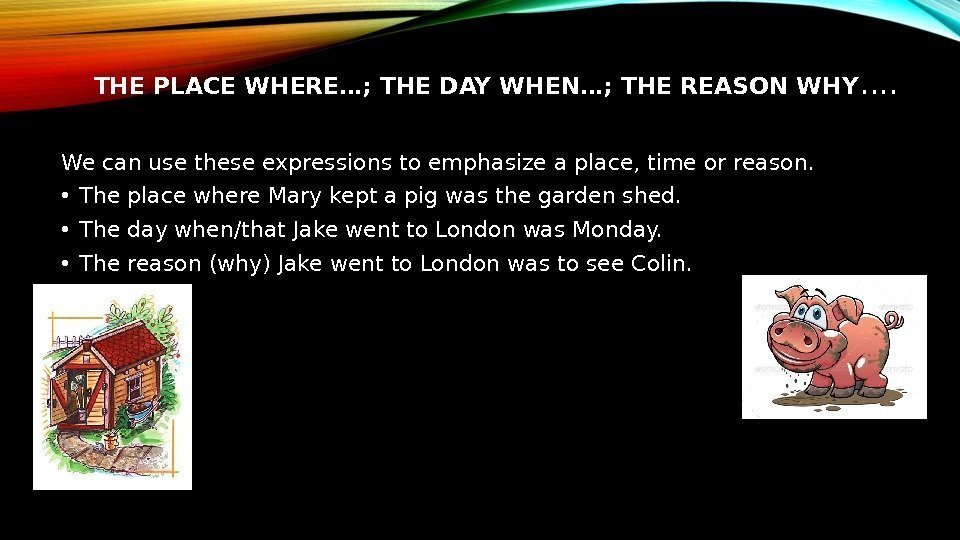
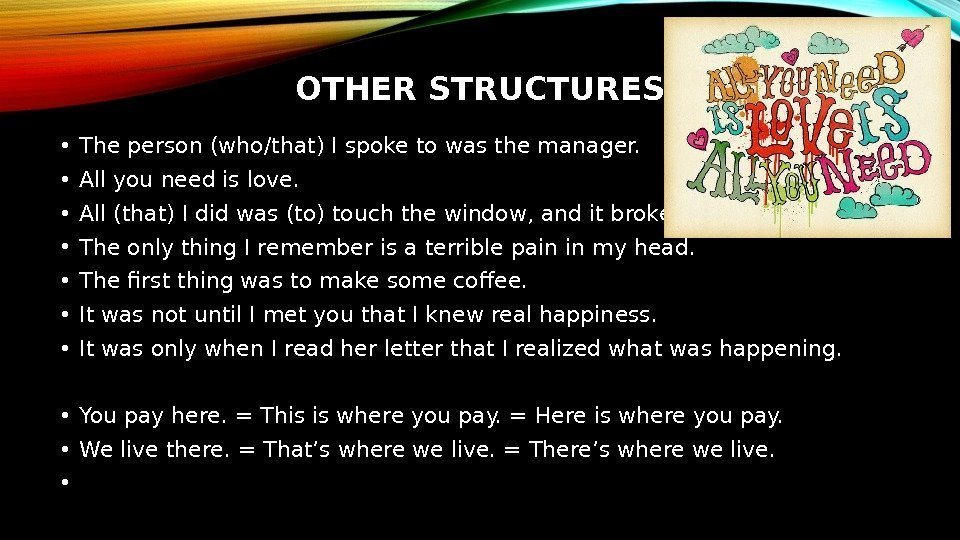
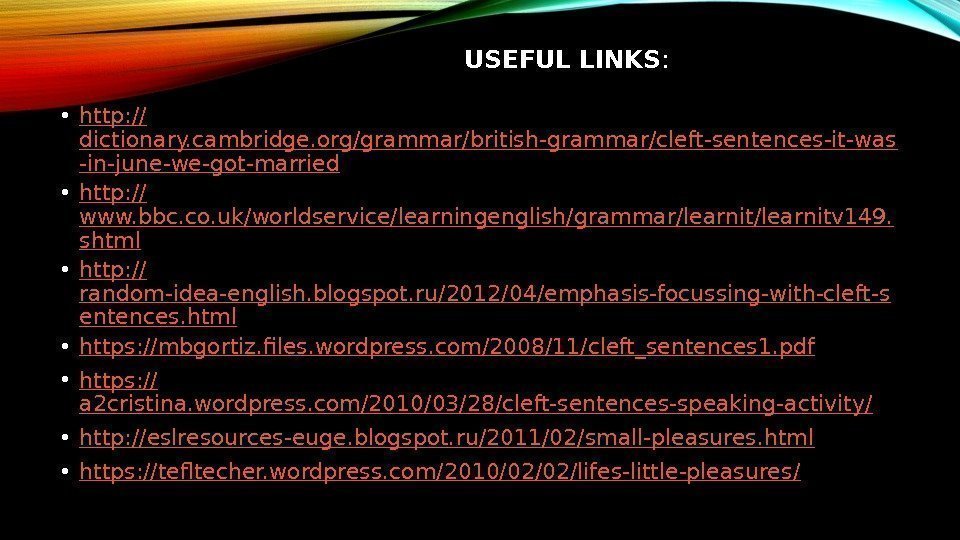
cleft_sentences.pptx
- Размер: 2.0 Мб
- Автор:
- Количество слайдов: 11
Описание презентации CLEFT SENTENCES IN ENGLISH We use cleft по слайдам
 CLEFT SENTENCES IN ENGLISH
CLEFT SENTENCES IN ENGLISH
 We use cleft sentences, especially in speaking, to connect what is already understood to what is new to the listener. In a cleft sentence, a single message is divided into two clauses. This allows us to focus on the new information. Because there are two parts to the sentence it is called cleft (from the verb cleave ) which means divided into two. Cleft sentences are particularly useful in writing where we cannot use intonation for purposes of focus or emphasis, but they are also frequently used in speech.
We use cleft sentences, especially in speaking, to connect what is already understood to what is new to the listener. In a cleft sentence, a single message is divided into two clauses. This allows us to focus on the new information. Because there are two parts to the sentence it is called cleft (from the verb cleave ) which means divided into two. Cleft sentences are particularly useful in writing where we cannot use intonation for purposes of focus or emphasis, but they are also frequently used in speech.
 IT-cleft sentences It was my secretary that sent the bill to Mr Harding yesterday. It’s today that he is going. It’s speed that causes accidents, not bad roads. It wasn’t my husband that sent the bill… It’s pilots that we need, not ground staff.
IT-cleft sentences It was my secretary that sent the bill to Mr Harding yesterday. It’s today that he is going. It’s speed that causes accidents, not bad roads. It wasn’t my husband that sent the bill… It’s pilots that we need, not ground staff.
 Who is possible instead of that when a personal subject is emphasized. • It was my secretary who sent … When a plural subject is emphasized, the verb is plural. It was the students that were angry. The verb cannot be emphasized with this structure. It was sent that my secretary the bill.
Who is possible instead of that when a personal subject is emphasized. • It was my secretary who sent … When a plural subject is emphasized, the verb is plural. It was the students that were angry. The verb cannot be emphasized with this structure. It was sent that my secretary the bill.
 IT IS I WHO …; IT IS ME THAT …. When an emphasized subject is a pronoun, there are two possibilities. • It is I who am responsible. (formal) • It’s me that’s/who’s responsible. (informal) • It’s you who are in the wrong. (formal) • It’s you that’s in the wrong. (informal) To avoid being either too formal or too informal in this case, we could say, for example, • I’m the person/the one who is responsible.
IT IS I WHO …; IT IS ME THAT …. When an emphasized subject is a pronoun, there are two possibilities. • It is I who am responsible. (formal) • It’s me that’s/who’s responsible. (informal) • It’s you who are in the wrong. (formal) • It’s you that’s in the wrong. (informal) To avoid being either too formal or too informal in this case, we could say, for example, • I’m the person/the one who is responsible.
 WH-CLEFT SENTENCES • What I need is a holiday. • What they like is pizza. • What Mary kept in the garden shed was a pig. • What Phil is is the secretary. A what-clause is normally considered to be singular; if it begins a cleft sentence it is followed by is/was. But a plural verb is sometimes possible before a plural noun in an informal style. What we want Is/are some of those cakes.
WH-CLEFT SENTENCES • What I need is a holiday. • What they like is pizza. • What Mary kept in the garden shed was a pig. • What Phil is is the secretary. A what-clause is normally considered to be singular; if it begins a cleft sentence it is followed by is/was. But a plural verb is sometimes possible before a plural noun in an informal style. What we want Is/are some of those cakes.
 EMPHASIZING VERBS: WHAT HE DID WAS…. When we want to emphasize a verb (or an expression beginning with a verb), we have to use a more complicated structure with what…. . do. Infinitives with and without to are possible. • What he did was (to) scream. • What she does is (to) write science fiction.
EMPHASIZING VERBS: WHAT HE DID WAS…. When we want to emphasize a verb (or an expression beginning with a verb), we have to use a more complicated structure with what…. . do. Infinitives with and without to are possible. • What he did was (to) scream. • What she does is (to) write science fiction.
 EMPHASIZING A WHOLE SENTENCE A whole sentence can be given extra emphasis by using a cleft structure with what and the verb happen. What happened was (that) the car broke down.
EMPHASIZING A WHOLE SENTENCE A whole sentence can be given extra emphasis by using a cleft structure with what and the verb happen. What happened was (that) the car broke down.
 THE PLACE WHERE…; THE DAY WHEN…; THE REASON WHY …. We can use these expressions to emphasize a place, time or reason. • The place where Mary kept a pig was the garden shed. • The day when/that Jake went to London was Monday. • The reason (why) Jake went to London was to see Colin.
THE PLACE WHERE…; THE DAY WHEN…; THE REASON WHY …. We can use these expressions to emphasize a place, time or reason. • The place where Mary kept a pig was the garden shed. • The day when/that Jake went to London was Monday. • The reason (why) Jake went to London was to see Colin.
 OTHER STRUCTURES • The person (who/that) I spoke to was the manager. • All you need is love. • All (that) I did was (to) touch the window, and it broke. • The only thing I remember is a terrible pain in my head. • The first thing was to make some coffee. • It was not until I met you that I knew real happiness. • It was only when I read her letter that I realized what was happening. • You pay here. = This is where you pay. = Here is where you pay. • We live there. = That’s where we live. = There’s where we live. •
OTHER STRUCTURES • The person (who/that) I spoke to was the manager. • All you need is love. • All (that) I did was (to) touch the window, and it broke. • The only thing I remember is a terrible pain in my head. • The first thing was to make some coffee. • It was not until I met you that I knew real happiness. • It was only when I read her letter that I realized what was happening. • You pay here. = This is where you pay. = Here is where you pay. • We live there. = That’s where we live. = There’s where we live. •
 USEFUL LINKS : • http: // dictionary. cambridge. org/grammar/british-grammar/cleft-sentences-it-was -in-june-we-got-married • http: // www. bbc. co. uk/worldservice/learningenglish/grammar/learnitv 149. shtml • http: // random-idea-english. blogspot. ru/2012/04/emphasis-focussing-with-cleft-s entences. html • https: // mbgortiz. files. wordpress. com/2008/11/cleft_sentences 1. pdf • https: // a 2 cristina. wordpress. com/2010/03/28/cleft-sentences-speaking-activity/ • http : // eslresources-euge. blogspot. ru/2011/02/small-pleasures. html • https: //tefltecher. wordpress. com/2010/02/02/lifes-little-pleasures /
USEFUL LINKS : • http: // dictionary. cambridge. org/grammar/british-grammar/cleft-sentences-it-was -in-june-we-got-married • http: // www. bbc. co. uk/worldservice/learningenglish/grammar/learnitv 149. shtml • http: // random-idea-english. blogspot. ru/2012/04/emphasis-focussing-with-cleft-s entences. html • https: // mbgortiz. files. wordpress. com/2008/11/cleft_sentences 1. pdf • https: // a 2 cristina. wordpress. com/2010/03/28/cleft-sentences-speaking-activity/ • http : // eslresources-euge. blogspot. ru/2011/02/small-pleasures. html • https: //tefltecher. wordpress. com/2010/02/02/lifes-little-pleasures /

